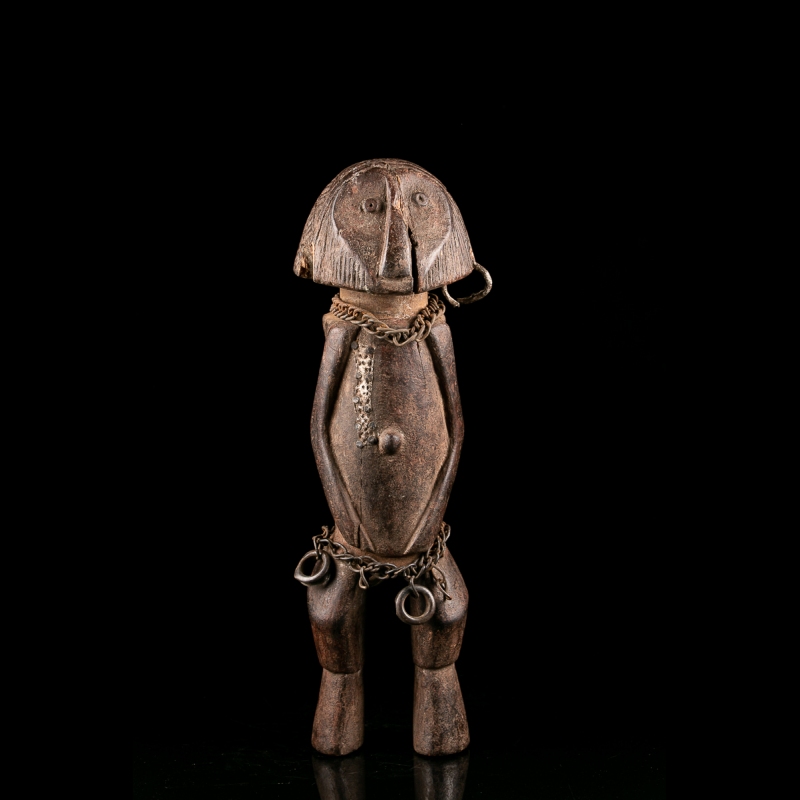












The Zande statues, originating from the Congo, play a crucial role in the ritual practices of the Zande culture, an ethnic group in Central Africa. These statues are often used in religious and ritual ceremonies aimed at establishing and maintaining harmony between spirits, ancestors, and the community.
Objects of veneration: Zande statues are generally regarded as objects of veneration. They often represent stylized human figures with distinctive features that can vary depending on the ritual context. These figures may symbolize ancestors, nature spirits, or deities associated with specific aspects of life.
Communication with spirits: The Zande believe in a close spiritual connection with their ancestors and supernatural forces. The statues serve as mediums through which priests and community members can communicate with spirits. These interactions often seek guidance, blessings, or appeasement of spirits in times of conflict.
Fertility and passage ceremonies: Zande statues are also used in ceremonies related to fertility and rites of passage, such as weddings, births, and initiations. They symbolize the blessing of ancestors on these significant moments in an individual's or community's life.
Offerings and sacrifices: Statues may be accompanied by offerings such as food, drinks, or other symbolic objects. Animal sacrifices may also be performed to appease the spirits represented by the statues and ensure prosperity and protection.
Transmission of traditions: Zande statues play a crucial role in transmitting cultural and religious traditions from generation to generation. They are often inherited within families and used to perpetuate the connection between the living and ancestors, ensuring cultural continuity.
Data sheet
You might also like

The Zande statues, originating from the Congo, play a crucial role in the ritual practices of the Zande culture, an ethnic group in Central Africa. These statues are often used in religious and ritual ceremonies aimed at establishing and maintaining harmony between spirits, ancestors, and the community.
Objects of veneration: Zande statues are generally regarded as objects of veneration. They often represent stylized human figures with distinctive features that can vary depending on the ritual context. These figures may symbolize ancestors, nature spirits, or deities associated with specific aspects of life.
Communication with spirits: The Zande believe in a close spiritual connection with their ancestors and supernatural forces. The statues serve as mediums through which priests and community members can communicate with spirits. These interactions often seek guidance, blessings, or appeasement of spirits in times of conflict.
Fertility and passage ceremonies: Zande statues are also used in ceremonies related to fertility and rites of passage, such as weddings, births, and initiations. They symbolize the blessing of ancestors on these significant moments in an individual's or community's life.
Offerings and sacrifices: Statues may be accompanied by offerings such as food, drinks, or other symbolic objects. Animal sacrifices may also be performed to appease the spirits represented by the statues and ensure prosperity and protection.
Transmission of traditions: Zande statues play a crucial role in transmitting cultural and religious traditions from generation to generation. They are often inherited within families and used to perpetuate the connection between the living and ancestors, ensuring cultural continuity.
